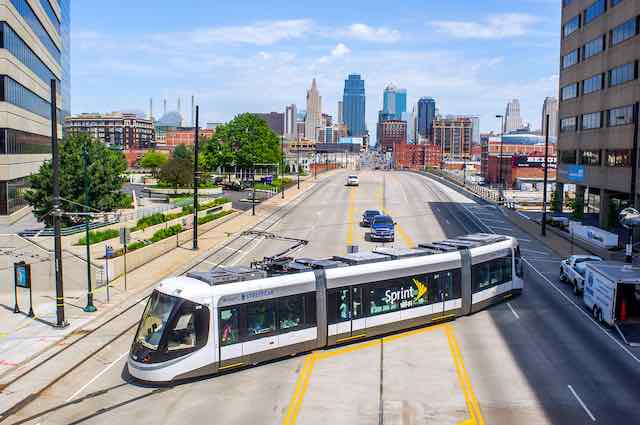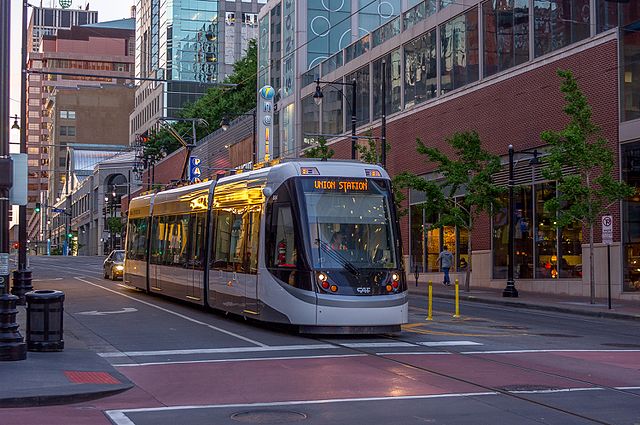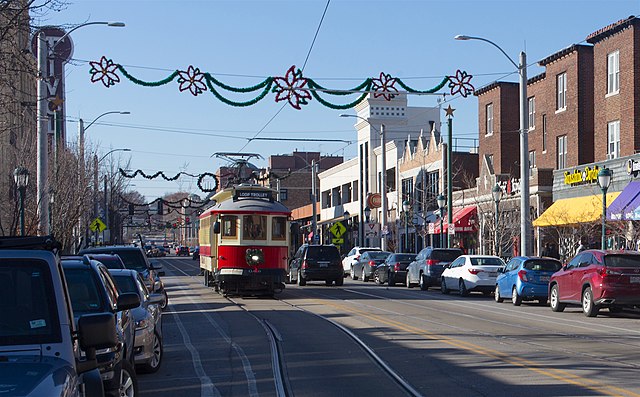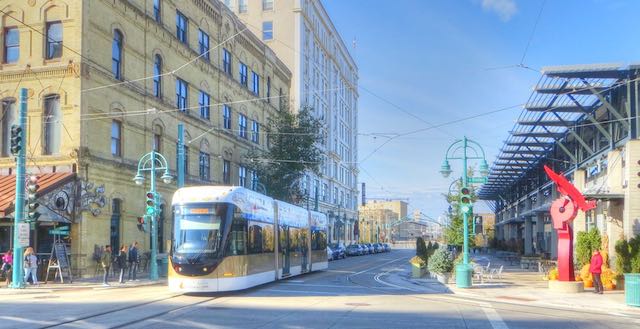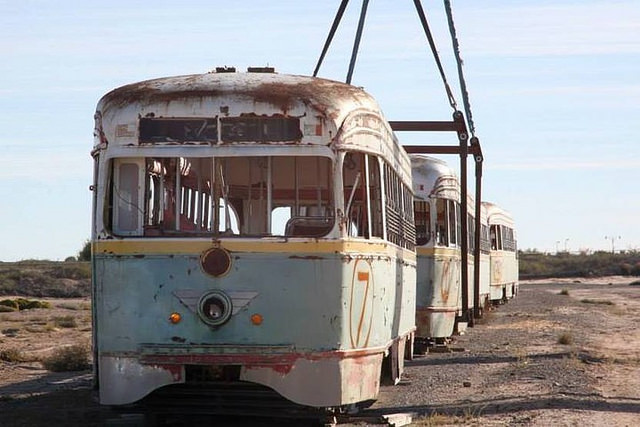“When I go shopping,” said Cordelia Chase, the vapid “mean girl” in Buffy the Vampire Slayer, “I have to have the most expensive thing, not because it’s expensive, but because it costs more.” That seems to be the rule guiding Ramsey County, home of St. Paul, Minnesota.
A streetcar in Kansas City heroically manages to block five lanes of traffic all at once. Photo by Jason Doss.
The county is considering two major alternatives for a transit line from St. Paul Union Depot (SPUD) to the Mall of America (MOA) via Minneapolis-St. Paul Airport (MSP): a modern streetcar, which can move less than 3,000 people per hour at about 16 miles per hour and would cost $2.1 billion; and a bus-rapid transit line that could move 10,000 to 20,000 people per hour supposedly at 18 miles per hour (but I bet it could run much faster) and is estimated to cost $121 million to build and half as much to operate as the streetcar line. Continue reading

